How to Handle Regression in Home-Based ABA Therapy
August 1, 2025
Supporting Resilience: Managing Regression in Home-Based ABA Therapy

Understanding and Addressing Skill Regression in Children with Autism
Regression in children receiving ABA therapy can be a challenging experience for caregivers and therapists alike. Recognizing the signs early and implementing effective strategies are crucial to maintaining progress and supporting the child's development. This article explores common signs of regression, preventive measures during therapy transitions, and best practices for managing setbacks in a home setting.
Identifying Signs of Regression in Children Receiving ABA
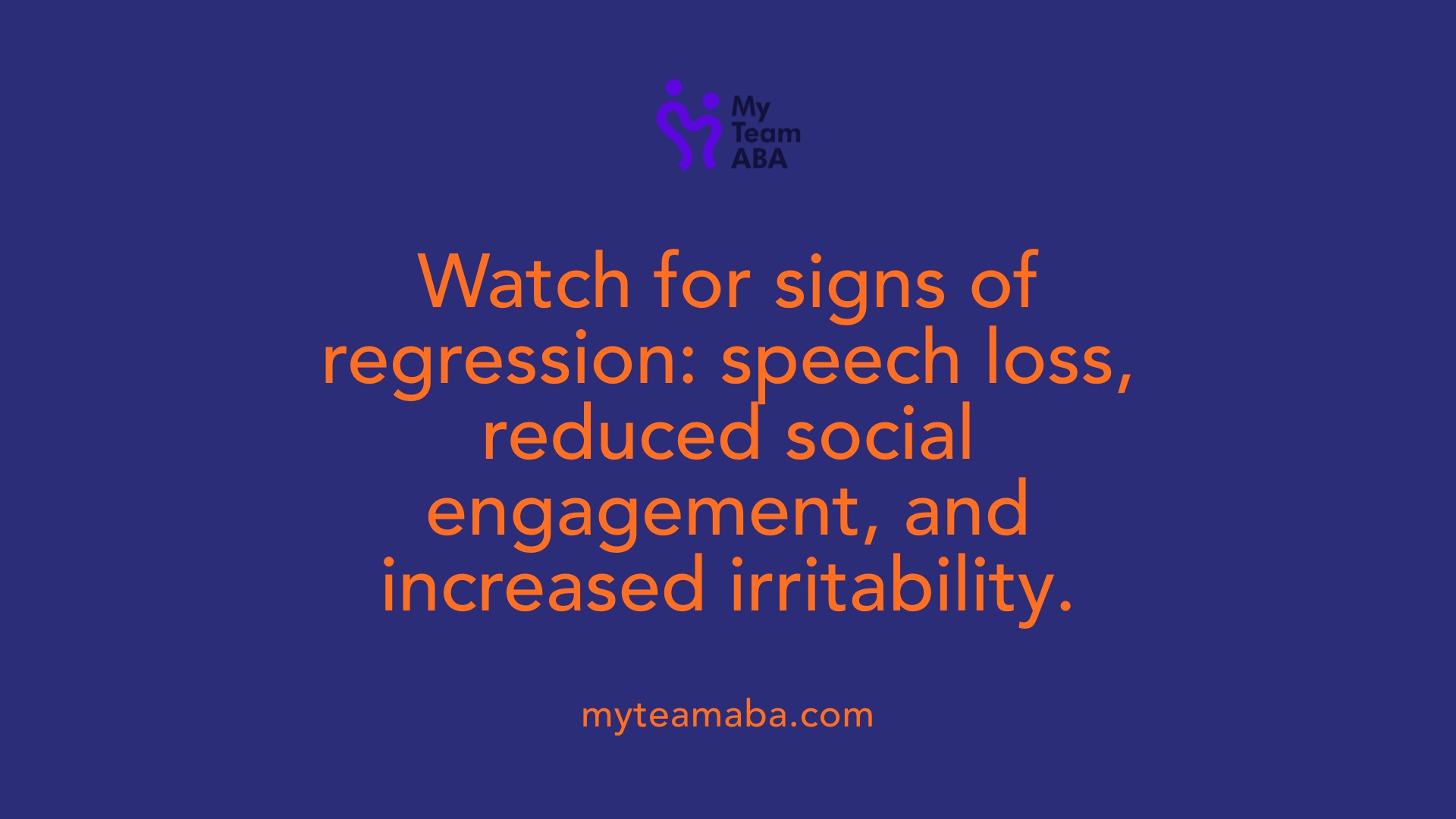
What are common signs of regression in children receiving ABA therapy?
In children undergoing ABA therapy, regression can manifest in various ways, often indicating that they are losing previously acquired skills. One of the most noticeable signs is the loss of speech or language abilities. Children may stop using words they once used consistently or show difficulty initiating or responding to communication.
Social skills also tend to decline. A child might become less responsive to their name, avoid eye contact, or withdraw from social interactions they previously enjoyed. Motor skills such as walking or fine motor tasks might regress as well, with children showing decreased coordination or reduced engagement in activities that involve movement.
Behaviorally, increased tantrums, irritability, and withdrawal are common indicators. Children may become more irritable or frustrated and show less interest in playing or engaging with others.
Early subtle signs can include delays in babbling, reduced interest in play activities, and atypical reactions to sensory stimuli. These signs often appear before more obvious skill loss and signal the need for prompt reassessment.
Additional behaviors that may indicate regression include heightened sensory sensitivities, repetitive behaviors such as lining up toys or hand-flapping, and emotional changes like anxiety or frustration. Recognizing these signs early allows caregivers and professionals to adapt interventions to support the child's ongoing development.
Understanding and identifying these regression indicators are vital for ensuring timely adjustments to therapy plans, which can help prevent further skill loss and promote continued growth.
Developing a Predictable Routine to Prevent Regression
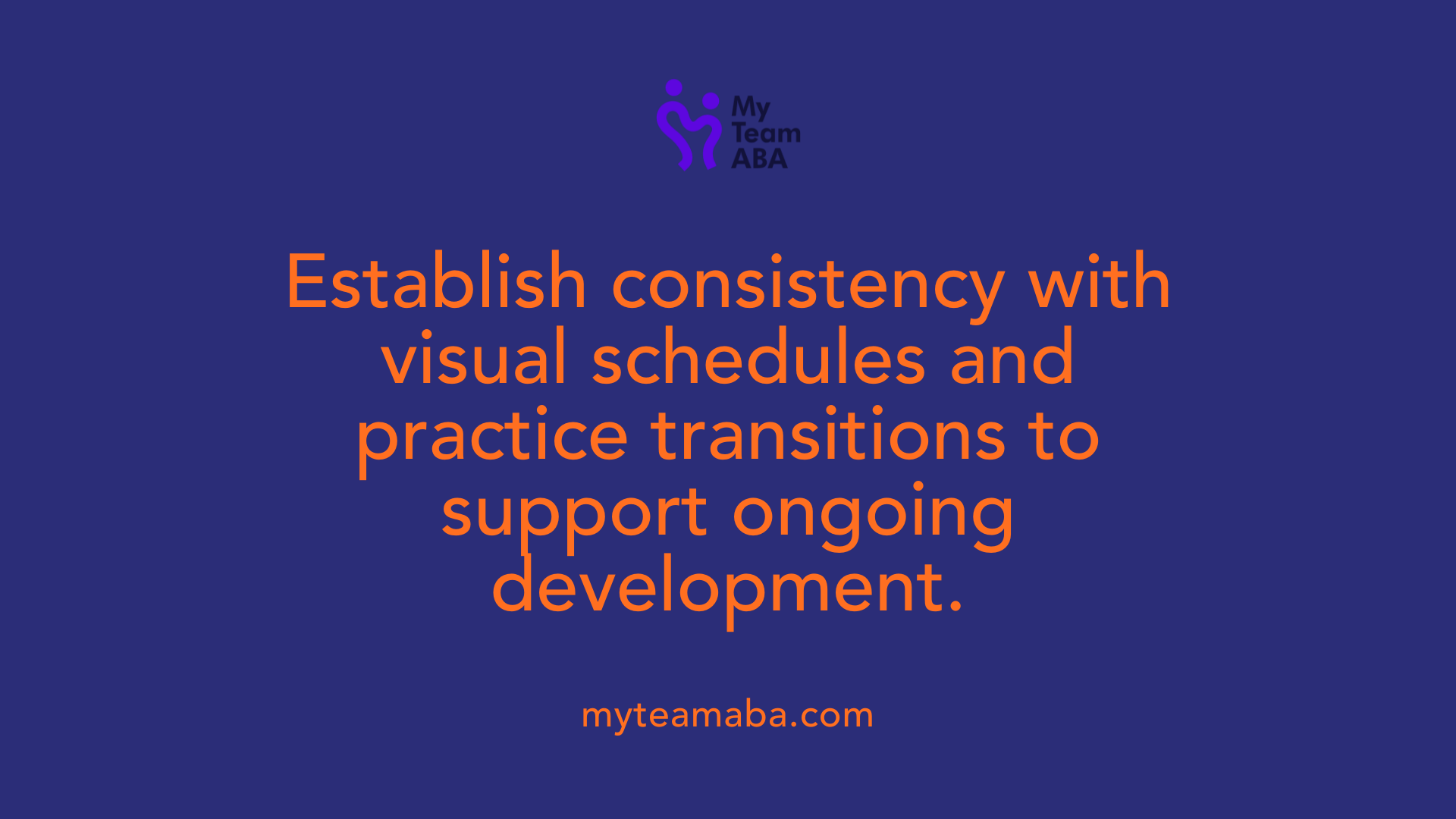 Consistency in routines is essential for reducing uncertainty and anxiety in children undergoing ABA therapy. When children know what to expect, they are more likely to engage positively with therapy and adapt to changes without regression.
Consistency in routines is essential for reducing uncertainty and anxiety in children undergoing ABA therapy. When children know what to expect, they are more likely to engage positively with therapy and adapt to changes without regression.
Utilizing visual aids such as daily schedules, visual timers, and countdown clocks can be incredibly effective. These tools help children anticipate upcoming transitions, making the process more manageable and less stressful. For example, a visual schedule outlining the day's activities or a countdown timer before a transition can prepare children for what's next.
Practicing transition skills beforehand through rehearsals or role-playing reinforces understanding and confidence. By simulating transitions in a controlled setting, children learn expected behaviors and become more comfortable facing changes.
Involving family members in routine planning creates consistency across all environments. When parents, siblings, and caregivers understand and support the routine, they can help reinforce it, making transitions smoother for the child.
Incorporating reinforcement strategies, such as praise or small rewards during transitions, encourages children to develop flexibility and resilience. This positive reinforcement motivates children to adapt better to changes over time.
To further prevent regression during therapy pauses, caregivers should communicate regularly with therapists to develop personalized, gradual transition plans. Maintaining routine and practicing skills during breaks, such as summer programs or outpatient sessions, can help preserve progress and minimize setbacks.
By combining predictable routines, visual supports, practice, family involvement, and reinforcement, caregivers can effectively support their child's development and reduce the likelihood of regression during periods of transition or therapy interruptions.
Crafting Tailored Strategies for Managing Regression
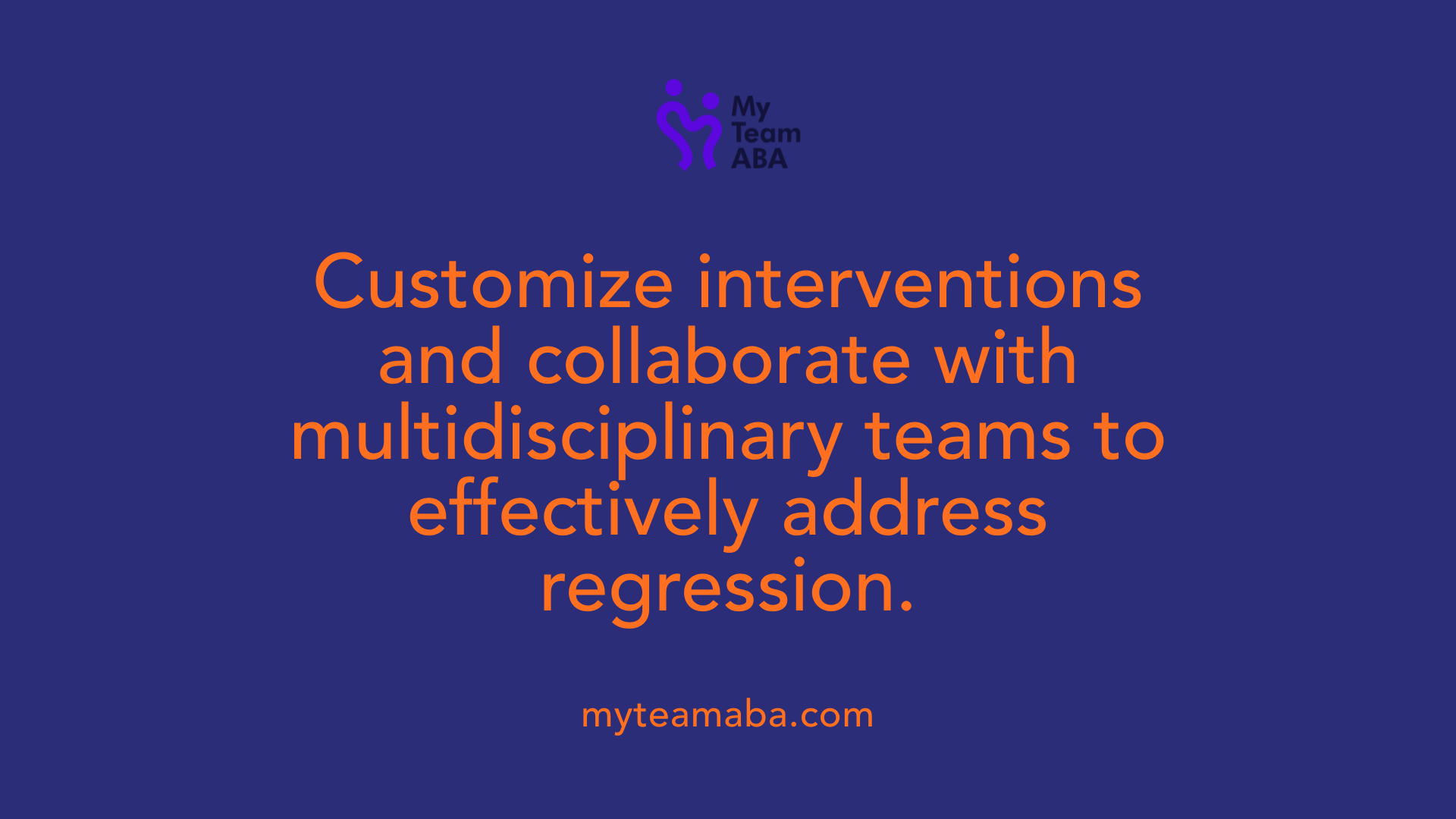
What strategies are effective for managing and addressing regression when it occurs?
Regression in children with autism can be distressing, but early detection and targeted strategies can help. Recognizing signs such as a sudden loss of speech, reduced social interactions, or a decline in motor skills is the first step. These may be triggered by medical issues, environmental changes, or emotional factors.
Once identified, it’s important to reevaluate the child’s individualized ABA plan. This involves revisiting learned skills, increasing reinforcement for successful behaviors, and incorporating natural environment teaching techniques that promote skill generalization in everyday settings.
Collaboration plays a crucial role. Working closely with a multidisciplinary team—including therapists, medical professionals, and parents—ensures consistent approaches across all environments. Sharing observations and strategies helps in maintaining a unified plan of action.
Maintaining routines and offering emotional support are vital. Avoiding regression by sticking to familiar routines and providing reassurance can comfort the child during periods of change or difficulty. It’s equally important to avoid reverting to less effective techniques, such as reintroducing diapers if a child is working towards independence.
Careful data collection and regular monitoring allow caregivers and therapists to track progress, make necessary adjustments, and ensure that the child is regaining lost skills efficiently. Personalized, flexible intervention plans tailored to the child's evolving needs are essential for minimizing the impact of regression and supporting ongoing development.
For more information, search for "Managing regression in ABA therapy children" to find additional resources and strategies.
Adjusting Therapy to Reduce Regression Risks
How can therapy be adjusted to minimize the risk of regression?
To help children maintain their progress and prevent regression, it’s important to adapt ABA therapy across different environments and during various transitions. Consistent practice in the home, school, and community settings reinforces learned skills and promotes their generalization.
Using visual supports and timers is a proven strategy to create predictability. Visual schedules, visual timers, and clear cues help children understand what to expect, reducing anxiety and making transitions smoother. This stability encourages the retention of skills and minimizes behavioral disruptions.
Planning for therapy breaks should be gradual and well-structured. Collaborating with a BCBA, families can incorporate reinforcement systems during periods of reduced or paused therapy. This approach maintains motivation and prevents skill loss during times when formal therapy might be less frequent.
Continuous evaluation is crucial. Regular progress assessments and goal adjustments ensure that therapy remains relevant and appropriately challenging. Tailoring goals to the child's current developmental stage keeps them engaged and prevents stagnation.
Engaging children in community activities and daily life skills practice extends learning beyond structured sessions. Activities like shopping, playing with peers, or helping with chores reinforce social, communication, and practical skills, further reducing the chances of regression.
Overall, a proactive approach involving consistency, predictability, gradual planning, ongoing assessment, and community integration creates a robust framework that supports skill retention and development.
Supporting Children During Regression Episodes
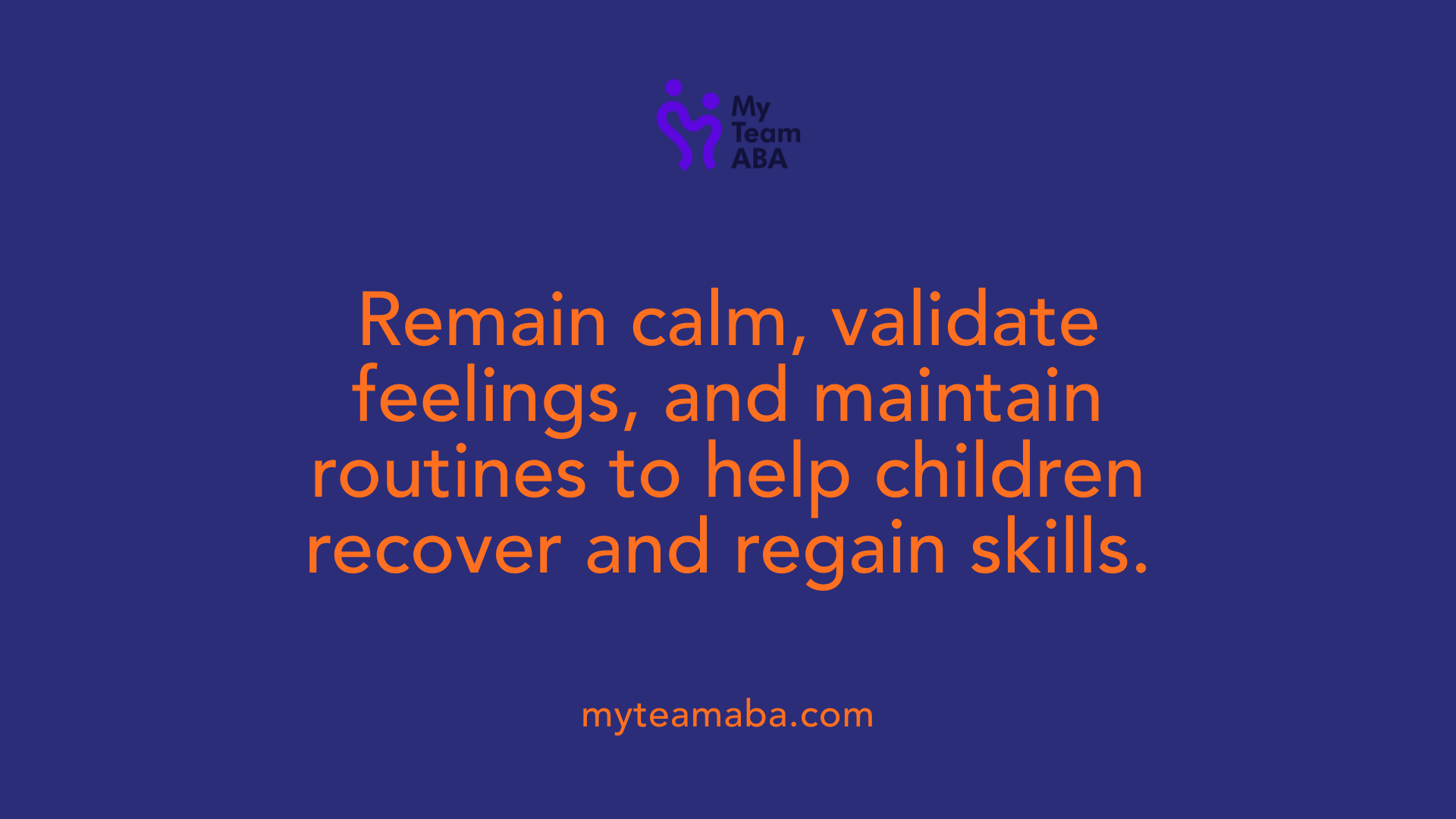 When children experience regression, it can be distressing for both the child and caregiver. Understanding how to respond effectively is crucial to supporting the child's emotional and developmental needs.
When children experience regression, it can be distressing for both the child and caregiver. Understanding how to respond effectively is crucial to supporting the child's emotional and developmental needs.
Caregivers should aim to remain patient and calm during these episodes. Maintaining a composed demeanor helps create a sense of safety and reassurance for the child. Physical reassurance, such as gentle touch or a comforting presence, can also provide a feeling of security.
Consistent routines are especially important during regression, as they help foster a sense of normalcy and predictability. When routines are stable, children are more likely to feel secure and less anxious about the changes they are experiencing.
Validating the child's feelings and normalizing their reactions is essential. Listening carefully, acknowledging their emotions, and reassuring them that their feelings are understandable can help the child feel heard and supported.
Engaging in calming activities, such as deep breathing, sensory play, or quiet time, assists in reducing stress and anxiety. These activities provide a distraction and help regulate emotions.
Open and honest communication also plays a significant role. Sharing age-appropriate information and limiting exposure to distressing news help children process their emotions healthily.
Collaboration with therapists and caregivers ensures a consistent approach. Professionals can offer tailored strategies that meet the child's unique needs, supporting recovery and development.
Overall, recognizing that regression often reflects natural developmental or healing processes can help caregivers respond with empathy, patience, and understanding. Providing a nurturing environment and consistent support encourages children to regain their skills and confidence over time.
Enhancing Communication Between Caregivers and Therapists
Effective communication between caregivers and therapists plays a fundamental role in supporting a child's progress in ABA therapy. Regular meetings help ensure that both parties are aligned on goals, strategies, and any observed changes in behavior or development. Setting up consistent schedules for check-ins and maintaining communication logs allow caregivers and therapists to share detailed updates about the child's behavior, progress, and challenges.
Asking questions and openly discussing concerns or uncertainties is crucial. Clarifying goals and expectations ensures everyone is working toward a shared understanding and helps tailor interventions more effectively. Sharing progress updates, whether through written logs or during meetings, keeps the therapy plan responsive to the child's evolving needs.
Collaborative goal setting and flexibility in making adjustments are essential for maximizing therapy outcomes. When both caregivers and therapists work together to revise objectives based on ongoing observations, the intervention remains relevant and motivating for the child.
What tips can caregivers follow to support children during episodes of regression?
During regressions—temporary setbacks in progress—caregivers can provide vital emotional support. Remaining patient and calm helps create a safe environment, which is especially important during challenging episodes. Using physical touch appropriately can offer reassurance, while maintaining predictable routines fosters stability. Recognizing and validating the child's feelings, normalizing reactions, and offering reassurance contribute to emotional regulation.
Engaging children in calming activities like deep breathing exercises or play can reduce anxiety and support their emotional well-being. Honest communication about the situation, while limiting exposure to distressing news, helps children process their feelings. Importantly, caregivers should work closely with therapists, understanding that regression can be a natural part of development or healing.
Supporting children through regression involves a compassionate approach that emphasizes patience, consistency, and developmentally appropriate responses. By collaborating with therapists and providing ongoing emotional support, caregivers can help children navigate setbacks smoothly and return to progress faster.
Optimizing Out-of-Home and Community-Based ABA Settings
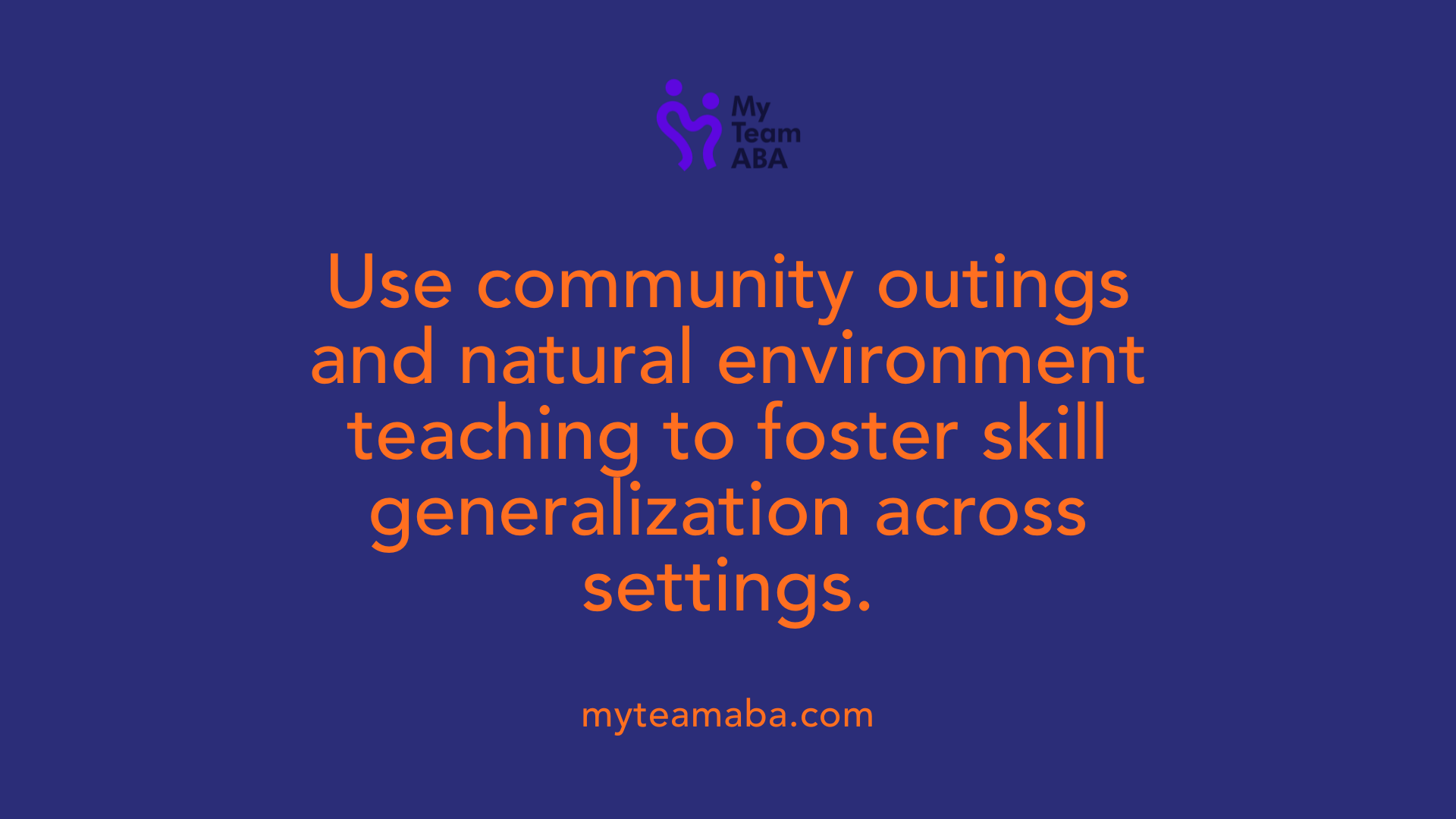
How does the setting influence the effectiveness of ABA therapy?
Research indicates that children who receive ABA therapy in center-based settings tend to master more exemplars per hour compared to those in home-based environments. A retrospective study analyzing 313 children with ASD found that baseline mastery rates were significantly higher in center settings, with children acquiring twice as many skills within the same time frame. The controlled environment, closer supervision, and structured routines contribute to these improved outcomes. Factors such as enhanced socialization opportunities and consistent implementation of reinforcement strategies further support this trend.
What are common signs of regression in children receiving ABA therapy?
Signs of regression can vary but often include the loss of skills previously mastered. These may be subtle at first, such as decreased eye contact, reduced response to name, or a slowdown in language use. Children might show increased tantrums, frustration, or withdrawal from social engagement. Early indicators also include a decline in interest during play, sensory sensitivities, and the re-emergence of repetitive behaviors like lining up toys or hand-flapping. Emotional shifts such as heightened anxiety or irritability may also occur. Prompt recognition of these signs is crucial to prevent further skill loss and to allow timely adjustments in therapy.
Why is socialization and varied environments important for children undergoing ABA?
Skill generalization—the ability to apply learned skills across different settings—is vital for a child’s independence. Just teaching in one setting may not translate to real-world situations where varied demands and distractions exist. Incorporating diverse environments, especially those outside the therapy setting, helps children adapt skills more effectively. Socialization with peers and adults in community settings broadens their experiential learning, making behaviors more functional and adaptable. This approach fosters confidence and safety in navigating new situations, ultimately leading to more meaningful progress.
How can best practices extend skills into community and natural environments?
Successful generalization involves several strategies:
- Practice across multiple settings, including home, school, and community spaces.
- Use natural environment teaching (NET) techniques to embed learning into real-life activities.
- Fade prompts gradually to allow children to perform skills independently.
- Collaborate closely with family members and educators to ensure consistency.
- Incorporate community outings, such as trips to parks, stores, or recreational areas, to embed skills in authentic contexts.
- Use visual aids and social stories to prepare children for transitions and unfamiliar situations. Implementing these practices ensures that skills are not only learned but also functional across various scenarios.
What are some challenges in community-based ABA, and how can they be addressed?
Community-based ABA can be challenging due to unpredictable environments, distractions, and varying levels of adult support. To manage these, it’s important to develop a clear plan with measurable goals, use visual supports, and maintain close communication among therapists, parents, and teachers. Consistency in reinforcement and prompting across settings is also critical. Additionally, training caregivers on effective strategies and offering regular coaching can improve implementation fidelity. Ultimately, fostering positive, low-stress experiences in community settings encourages skill retention and application.
How should therapy be adjusted during a pause, and why is it important to avoid regression?
Pausing ABA therapy requires careful planning. In collaboration with a BCBA, a structured plan should include a gradual reduction in therapy hours, with continued reinforcement of skills at home. Regular progress checks help monitor for any signs of regression. Maintaining routines and practicing learned skills during the break can mitigate the loss of progress. Without such measures, children may experience skill regression, where previously learned behaviors diminish or disappear. Such regression can result from inconsistent reinforcement, environmental changes, or emotional stress, emphasizing the importance of a well-structured transition plan.
What differences are observed between center-based and home-based ABA services?
Studies reveal that children receiving ABA services in center-based environments often demonstrate faster mastery of skills compared to home-based settings. The environment plays a significant role, with centers providing more controlled, supervised, and enriched contexts. These settings often include opportunities for socialization with peers, access to specialized materials, and consistent staff training. As a result, children in center settings tend to acquire and generalize skills more efficiently, leading to higher completion rates of learning objectives per hour.
How can skills learned in one setting be reinforced across various environments?
To promote skill generalization, caregivers and therapists should practice in multiple settings and involve natural opportunities for learning. Use of natural environment teaching (NET), fading prompts, and embedding skills into daily routines are effective strategies. Family members and educators should receive training and support to apply consistent reinforcement. Transitioning from structured teaching moments to spontaneous practice in natural contexts ensures that children can transfer skills beyond the therapy environment. Regularly reviewing goals and progress helps tailor approaches to support ongoing skill maintenance.
What collaboration methods enhance communication between parents and therapists?
Effective communication is essential for successful ABA outcomes. Regular meetings to discuss progress, challenges, and adjustments help align goals. Keeping communication logs allows for tracking behaviors and interventions outside sessions. Asking questions and seeking clarification fosters understanding, while shared documentation ensures consistency. Establishing open lines of communication encourages parents and therapists to work as a team, enabling timely modifications to strategies and reinforcing skills across all settings.
| Setting Type | Advantages | Challenges | Strategies to Improve |
|---|---|---|---|
| Center-based | Structured routines, supervision, socialization opportunities | May lack natural context, transportation issues | Incorporate community outings, social groups |
| Home-based | Individual attention, familiar environment | Less-controlled environment, limited resources | Collaborate with community programs, extend practice |
| Community-based | Real-world context, generalization | Unpredictability, distractions | Use visual supports, pre-visit training |
Considering these factors can optimize the effectiveness of ABA across different settings, ensuring skills are meaningful and sustainable.
Summary and Final Recommendations for Caregivers
What tips can caregivers follow to support children during episodes of regression?
During episodes of regression, caregivers play a vital role in providing emotional support and stability. Remaining patient and calm is essential; children often pick up on adult cues, so a composed demeanor helps them feel safe. Physical touch, like a gentle hug or holding their hand, can offer reassurance and comfort.
Maintaining predictable routines is crucial; routines provide a sense of security and normalcy, reducing anxiety related to sudden changes. Validating and listening to children’s feelings fosters trust and helps them process emotions. Normalizing reactions, like setbacks or tears, reminds children that their feelings are understandable.
Engaging children in calming activities such as deep breathing, sensory play, or supervised play can help alleviate stress. Sharing honest, age-appropriate information about what’s happening reassures children and diminishes fears. Limiting exposure to distressing news or environments also supports emotional regulation.
It's important to collaborate with therapists and healthcare providers to tailor support strategies. By understanding that regression can be a normal part of development, healing, or adaptation, caregivers can approach setbacks with empathy and patience.
Providing consistent, developmentally appropriate support helps children regain their skills and confidence. Remember, regression is often temporary, and with the right support, children can bounce back and continue progressing.
Empowering Caregivers and Professionals to Mitigate Regression Risks
Effectively handling regression in home-based ABA therapy involves early recognition, strategic planning, and collaborative support. Caregivers play a vital role in maintaining routine, employing visual supports, and practicing patience during challenging episodes. Professional guidance, especially from BCBAs, ensures therapies are adjusted appropriately to suit changing needs, reducing the risk of setbacks. As children progress, consistent efforts across settings—home, community, and educational environments—are crucial to reinforce skills and foster resilience. By understanding common signs, implementing preventive measures, and supporting emotional well-being, caregivers and professionals can help children navigate regression episodes successfully and continue on their developmental journey.
References
- ABA Therapy Challenges: Understanding and Overcoming Obstacles
- When to Pause ABA Therapy (and When Not To) - All Star ABA
- A Program Evaluation of Home and Center-Based Treatment for ...
- The Importance of Sticking to Consistent ABA Therapy
- When To Start and Stop ABA Therapy For Your Child?
- How to Prevent Summer Regression for Children with Autism
- When to Pause ABA Therapy (and When Not To) - All Star ABA
- Recognizing Early Signs of Regressive Autism - Divine Steps Therapy
